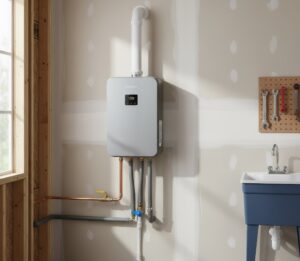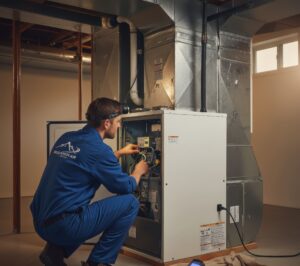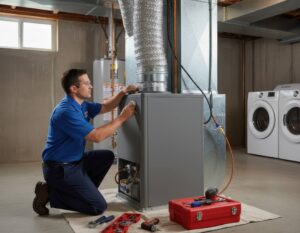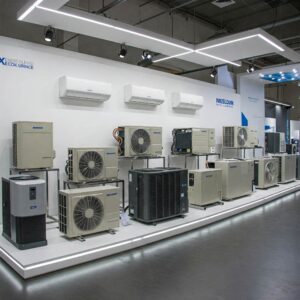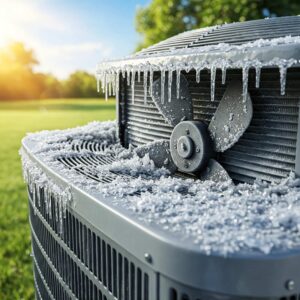Do you know the most common problem with furnaces and HVAC systems in general?
It’s dirty filters.
Almost all modern furnaces have filters and keeping them clean is the most basic but essential maintenance work you can do. Either replacing dirty disposable filters or cleaning reusable filters regularly will prevent countless furnace problems, saving unnecessary furnace repairs and prolonging the system’s life.
Clean filters in HVAC systems improve indoor air quality and efficiency, keep bills lower, and keep your family comfortable.
Let’s assume your system uses disposable filters. How do you replace a furnace filter?
How to Replace a Furnace Filter
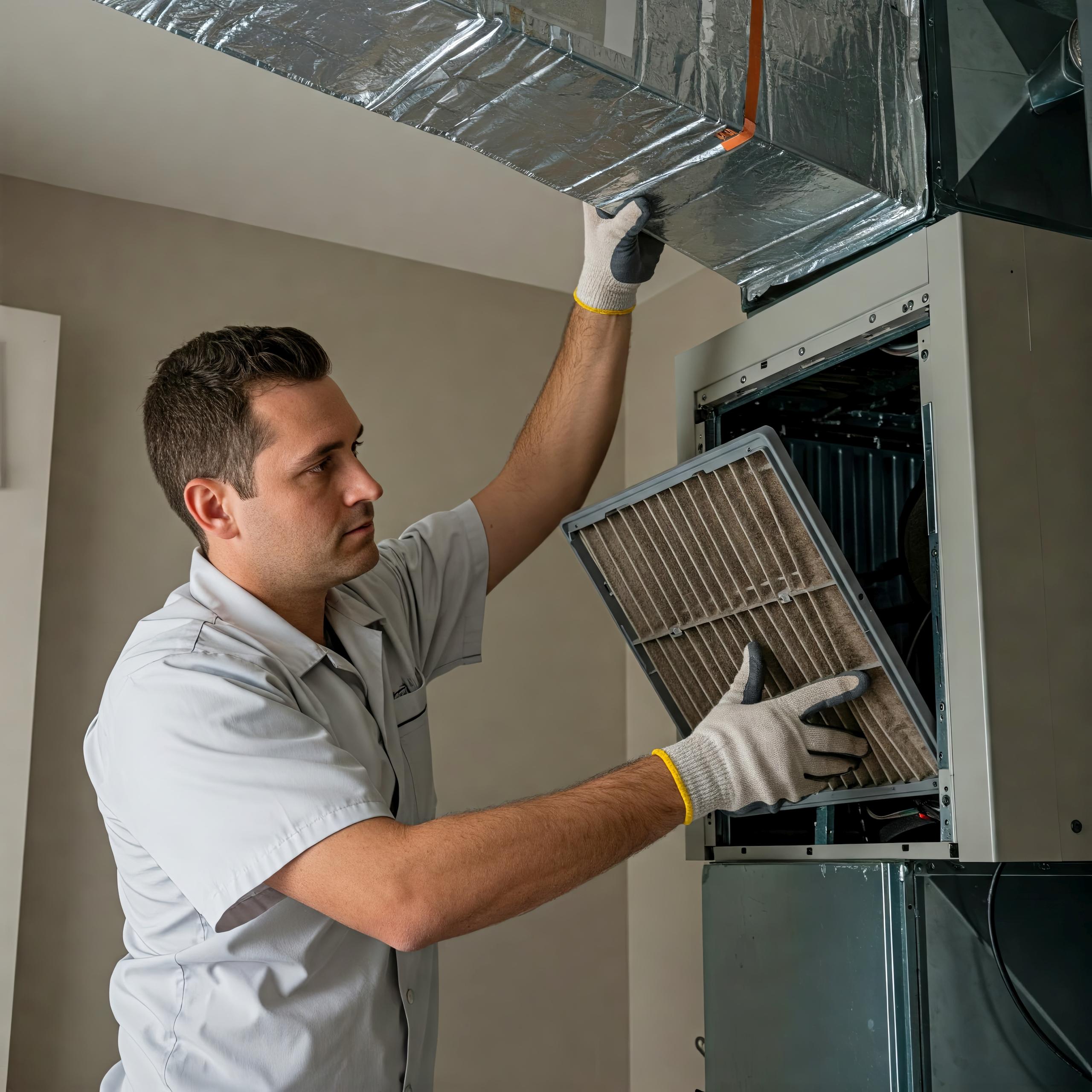
In most HVAC systems, you can locate the filter near the return air duct or blower compartment. If you need to buy a replacement filter, note the size and type before purchasing. With the furnace turned off, slide out the old filter, dispose of it, and simply slide the new filter in, ensuring the right airflow direction. Then turn the furnace back on.
There may be a few variations to this process in some systems—sometimes, the air filter is located elsewhere—but the basic instructions hold.
MAKE THE RIGHT HEATING & COOLING DECISIONS…
For over two decades, Alberta Mountain Air has helped Calgarians solve heating and cooling problems and maintain ideal comfort levels. Get in touch online for a quote.
Why Changing Your Furnace Filter Matters
Blocked or dirty air filters restrict airflow—and that’s one of the main things to impact performance in air conditioners, heat pumps, and furnaces. None of these devices will efficiently with dirty air filters.
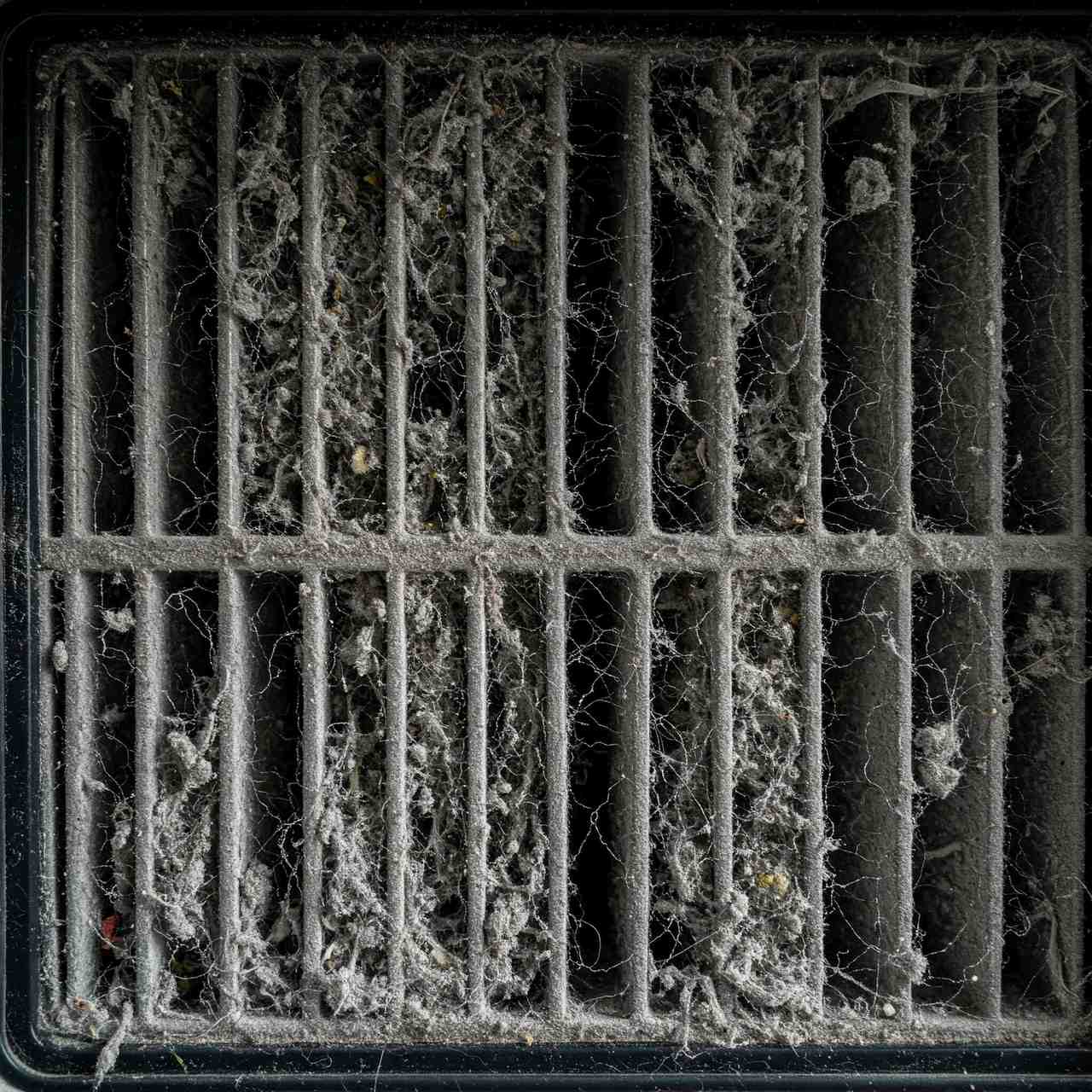
What’s more, clogged filters often lead to the following types of furnace problems:
- Blowing cold air
- Inconsistent heating
- Poor indoor air quality
- Additional wear and tear on components
- A spike in energy bills
- Excessive repair bills
Replacing furnace filters regularly prevents dust and debris buildup, maintains good indoor air quality, maintains furnace efficiency, and keeps energy costs under control. Ultimately, it can add years to the life of an HVAC system.
How Often Should You Replace Your Furnace Filter?
You should replace your furnace filter every few months at least—during the peak winter season, aim for a filter replacement every 4-8 weeks for peace of mind.
Besides the extra demand in winter, some Calgary homes require more regular filter replacement than others, most notably:
- If there are pets in the home
- If there are allergy sufferers in the home
- If there is construction in or around the home
- If wildfire smoke affects your home
- If smokers live in the home
- If your system uses thin filters (1-2 inches thick) rather than thick filters (4-6 inches thick)

The frequency with which you change the filter may vary according to the type of filter (more about this below).
How to Replace a Furnace Filter in Five Simple Steps
Changing your furnace filter is the simplest way to keep your indoor air clean, reduce the need for repairs, and keep heating bills down.
To replace a furnace filter, follow these basic steps:
1. Turn Off the Furnace
Safety first. Make sure you switch off the furnace using the thermostat or the furnace switch before attempting any DIY maintenance.
2. Locate the Filter
In most Calgary homes, you’ll find the filter located just inside the return air duct. This is where the home’s air supply enters the heating system—usually positioned in floors, ceilings, or walls. Alternatively, the filter could be in the blower compartment of the furnace itself.
If you can’t find the filter slot, consult the manual or speak to your HVAC service technician.
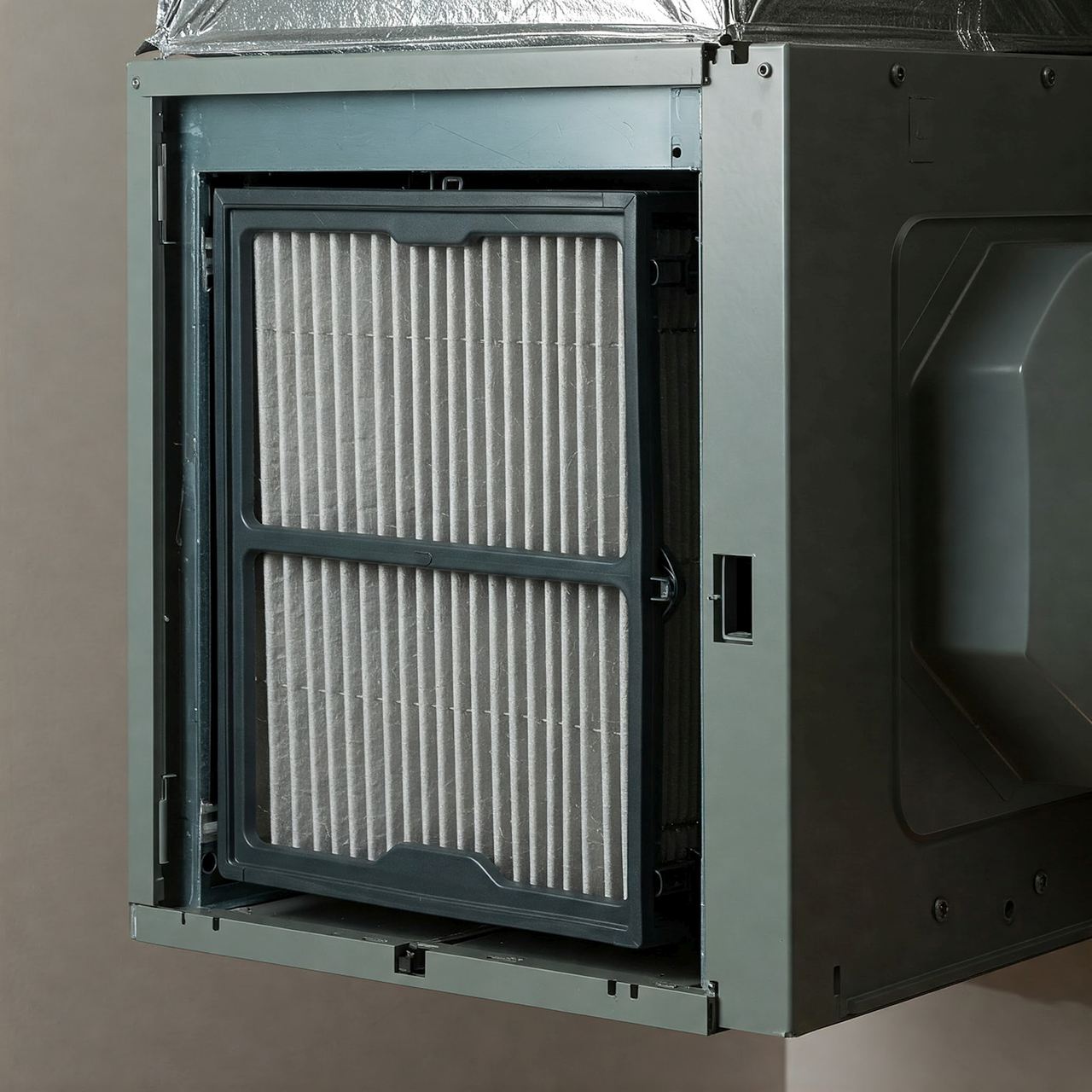
3. Identify the Type and Size of the Existing Filter
Once you locate the filter, carefully slide it out. It may be clogged with dust and grime if you haven’t changed it for a while. The old filter should be discarded but first, if you don’t already have a supply of replacement filters, note the type and size of the filter so that you can pick up an exact replacement at the hardware store.
4. Remove and Replace the Filter
Once you have slid the old filter out taking care not to dislodge dust, slide the new filter into the same slot. Take care to position the filter for the proper airflow direction (indicated by arrows on the filter frame). The arrows should point into your unit.
5. Turn the Furnace Back On
To confirm that the furnace is working properly, turn it back on and make sure that hot air starts to blow through the vents.
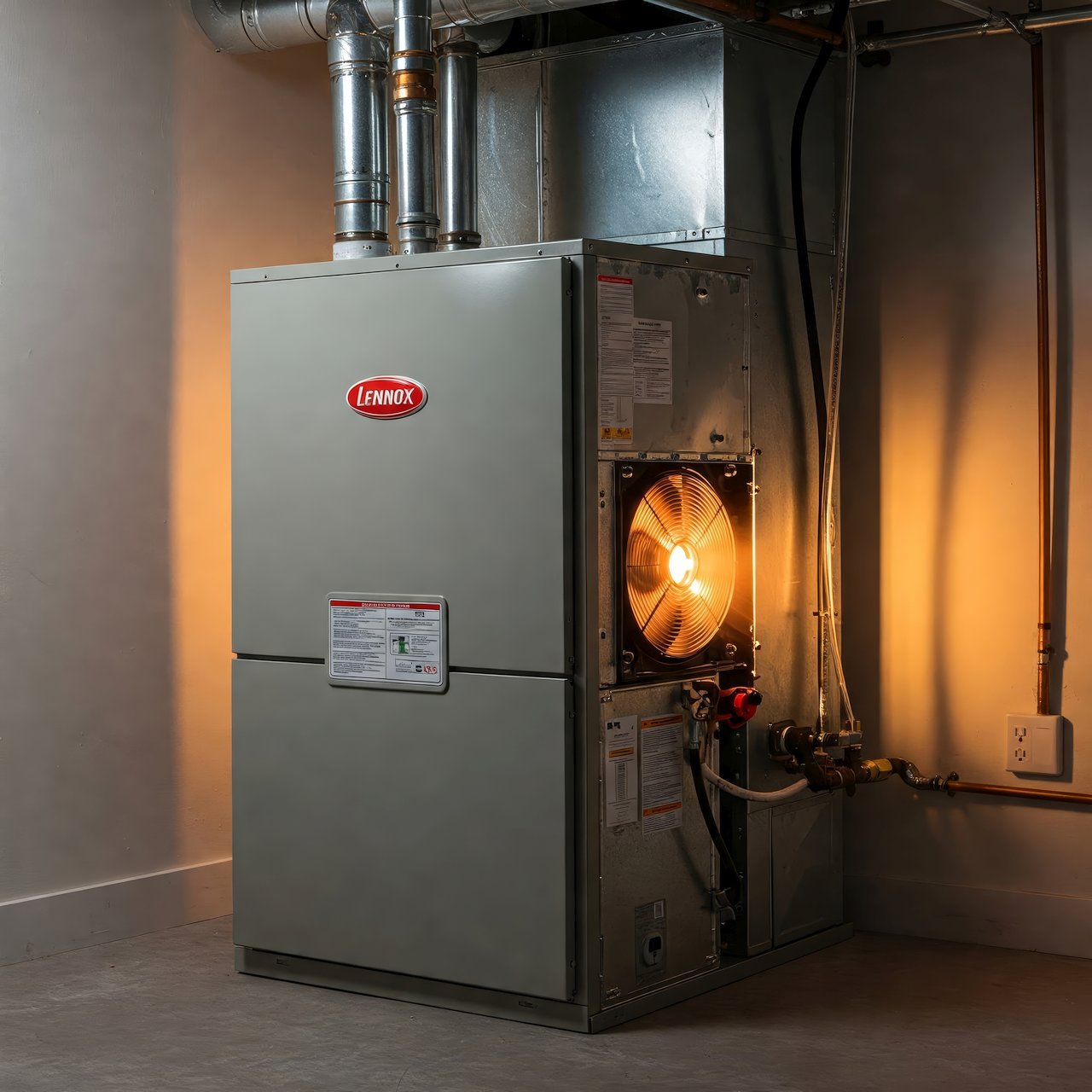
How Do You Choose the Right Furnace Filter?
Ideally, homeowners should keep a supply of filters at home for regular replacements. Filters are usually sold in multi-packs.
To ensure you choose the right filter, examine the old filter for the following information:
- Disposable or reusable: this is the most basic distinction. Solid-frame filters are likely reusable and should be washed whereas pleated, fibreglass filters with less sturdy frames are disposable and will need replacement.
- The MERV rating: this is the Minimum Efficiency Reporting Value, which is the main measure of furnace filter efficiency in Canada. It ranges from 1 to 20 with the higher numbers indicating high efficiency and the ability to trap smaller particles to improve air quality. Look for a MERV rating of 8-11 to remove household dust, pollen, and pet dander but higher (13-16) in smoky or smoggy areas or to combat bacteria and viruses.
- The size of the filter: this depends on the size of the filter slot in your HVAC system and it should be marked on the frame of an existing filter. Many sizes are available.
- Thickness of filter: filters that are one- or two-inches thick need more regular replacement, all else being equal. One-to-two-inch-thick filters are the most common and generally need replacing every 4-12 weeks while three-to-six-inch-thick filters may go six months or more before requiring a change.
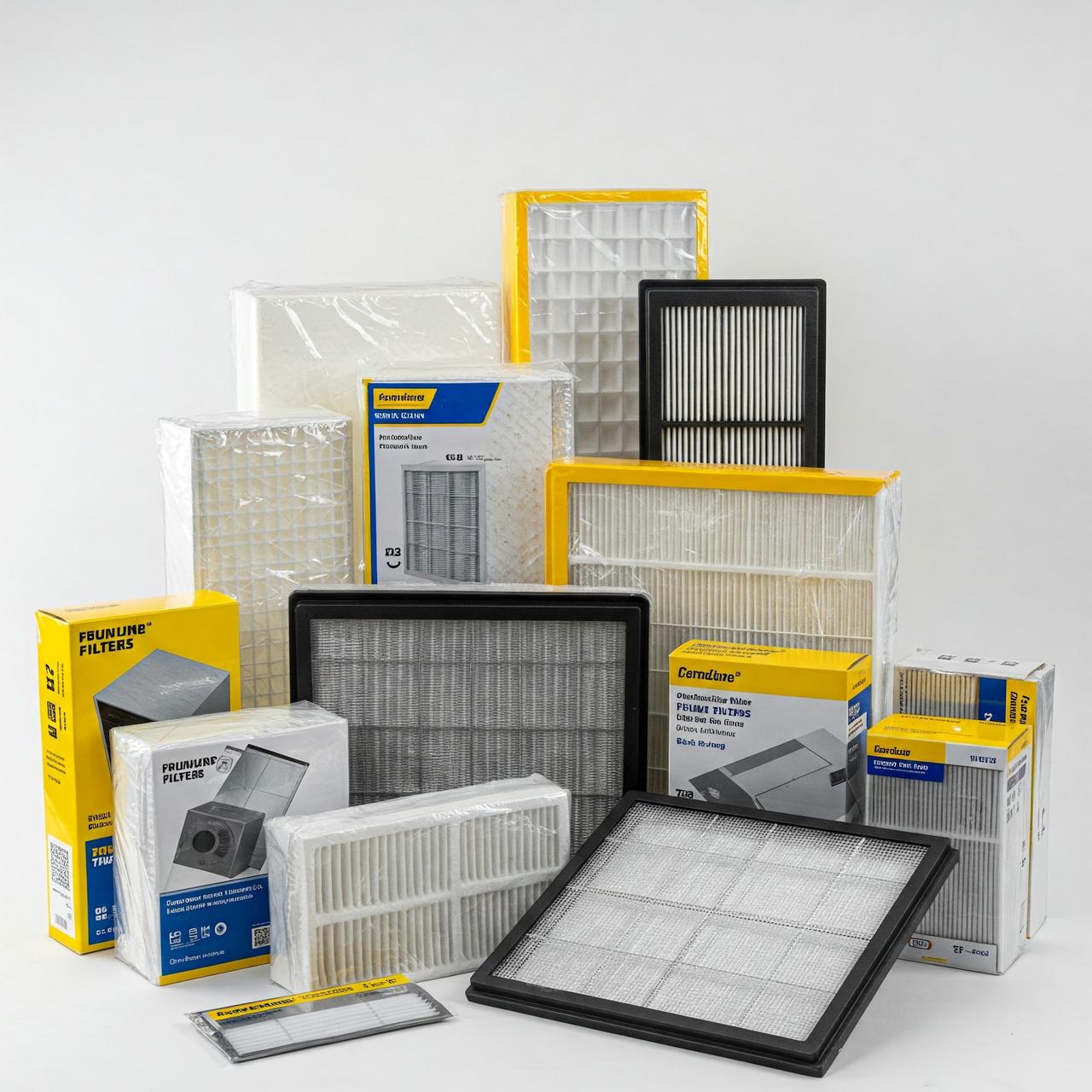
The most common filter type is the low-efficiency, disposable fiberglass filter with a MERV rating of 4-6. Keep in mind that these might not be sufficient for your home. Upping the MERV rating will generally produce cleaner air circulating in your home.
Common Mistakes to Avoid When Replacing a Filter
The most common mistakes when replacing furnace filters concern the filter direction or type/size.
Always make sure that you insert the filter into its slot with the arrow pointing in the direction of the airflow direction. Otherwise, your filter will be almost useless.
Trying to fit a square peg in a round hole is another common mistake. Make sure you use the right size of filter or it will not work properly in your HVAC system. Trying to insert a three-inch filter in a two-inch slot can cause damage. Similarly, trying to “stack” a few one-inch filters in a four-inch slot will not work unless your system is designed for that.
The biggest mistake of all with furnace filters? Neglecting them and only having them changed during annual furnace maintenance. Make sure that by the time your annual tune-up comes around, you’ve already changed the filter at least a few times that year—preferably, every 4-8 weeks during the colder months when the furnace is working at its hardest.
One way you can remember to change the filter regularly is to set reminders on your phone.

There’s no excuse for neglecting filters. After all, furnace costs are high enough in Alberta without adding to them by failing to protect the investment. No one should throw money down the drain like that!
How Do I Know If My Filter Needs Immediate Replacement?
If your furnace shows any of the following signs, the filter probably needs immediate replacement:
- Increased dust in the home
- Reduced airflow or inconsistent heating
- Higher energy bills (unexplained)
- Worsening allergy or respiratory issues

FAQs
Solid-frame filters are likely reusable and should be washed whereas pleated, fibreglass filters with less sturdy frames are disposable and will need replacement.
This depends. Both types of filters do the same job but reusable models are becoming increasingly common due to their lower environmental impact. They can also save money. These filters usually work like disposable filters but some are electrostatically charged to increase filtration.
HEPA (High-Efficiency Particulate Air) filters are high-end filters that trap up to 99 percent of particles 0.3 microns or larger. They can remove many indoor pollutants but may reduce airflow.
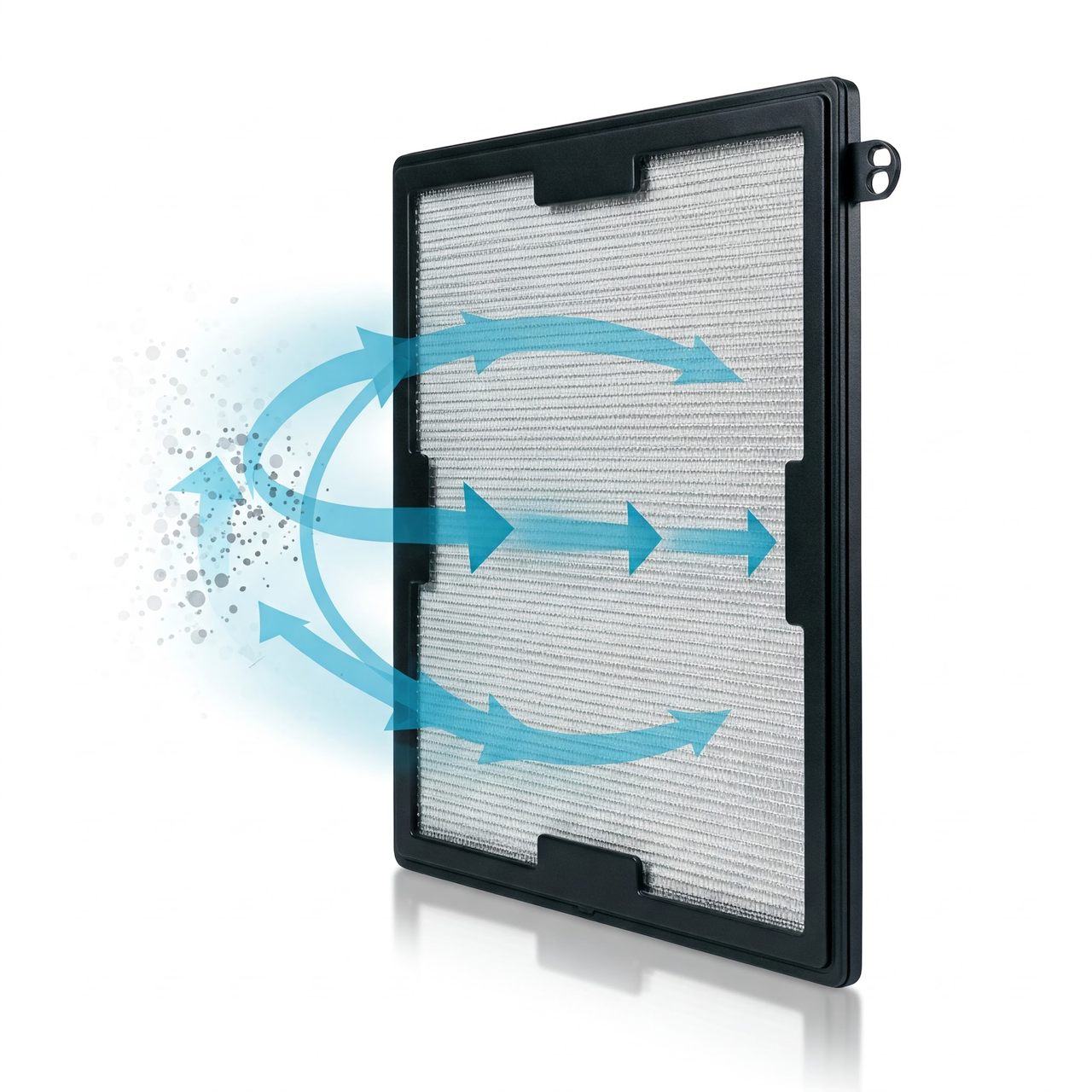
Peak Furnace Performance All Year Round…
If you haven’t thought about your furnace filter for months or booked an annual furnace tune-up recently, you likely need to change your filter.
It’s one of the few furnace maintenance steps you can look after yourself as a DIY job. Leave the other furnace cleaning tasks to the professionals, who can help you combat Calgary’s fluctuating weather conditions.
All HVAC professionals at Alberta Mountain Air are SAIT-certified and can help you make the right heating and cooling decisions. So, if you’re in Calgary and considering your heating and cooling options, contact us online.

